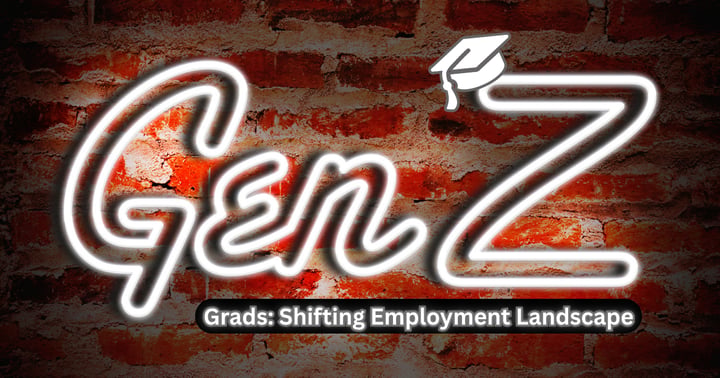Social Security Benefit Cuts: Your Guide to Defaulted Student Loans

Social Security Benefit Cuts: Your Guide to Defaulted Student Loans
"Imagine waking up to find your Social Security check, the lifeline you depend on, significantly smaller. Social Security benefit cuts for thousands of older Americans and individuals with disabilities. This isn't a hypothetical fear—it's a harsh reality, as federal student loan collections have fully resumed, directly impacting their essential benefits. After a pandemic-era pause, the government is actively recouping defaulted student loan debt, and your Social Security payments could be next. Are you prepared for what you need to know?"
Social Security Benefits & Defaulted Student Loans: What You Must Know Now
The Alarming Reality: How Your Social Security Benefits Are Being Cut
- The Resume Button Has Been Hit: After a significant pause during the pandemic, the Department of Education, through the Treasury Offset Program (TOP), is now actively resuming collections on defaulted federal student loans. This includes offsetting a portion of your Social Security benefits.
Who's Most Vulnerable?
- Older Americans: Many seniors who took out student loans later in life, or co-signed for family members, are now facing the brunt of these collections in retirement.
- Individuals with Disabilities: Those relying on Social Security Disability Insurance (SSDI) often face fixed incomes, making any reduction particularly devastating.
The "Cuts" Explained: What the Government Can Take:
- The Treasury Offset Program (TOP) allows the government to intercept federal payments, including Social Security benefits, to recover defaulted federal student loan debt.
- The 15% Rule: Generally, up to 15% of your monthly Social Security benefit can be taken.
- The $750 Protection: Crucially, your monthly Social Security benefit cannot be reduced below $750 after the offset is applied. This is a minimum protection level designed to prevent extreme hardship; however, benefits above this amount are vulnerable.
- Not All Benefits are Equal: While Social Security (SSDI, retirement) benefits are affected, Supplemental Security Income (SSI) benefits are generally not subject to this type of offset due to their different nature as needs-based programs.
Understanding Default: Are Your Loans at Risk?
- What is Default? Your Federal Student Loan enters default when you fail to make payments for a prolonged period (typically 270 days for Direct Loans). This is a critical distinction from mere delinquency (missed payments).
- Key Indicators of Default:
- You receive a "demand letter" from the Department of Education or a collection agency.
- Your loan appears on your credit report with a "defaulted" status.
- You are contacted by a debt collector assigned to your federal student loan.
- Why Default Matters: Default has severe consequences beyond benefit cuts, including wage garnishment, loss of eligibility for future federal student aid, and a severely damaged credit score.
Received a Notice? Your Immediate Action Plan is Critical
- Do NOT ignore the Notice: This is the most critical advice. Ignoring a notice of offset or collections will only worsen the situation.
- Verify Your Loan Information:
- Access your federal student loan history at StudentAid.gov.
- Confirm your loans are federal and in default.
- Identify the current loan holder or collection agency.
- Contact Your Loan Holder/Debt Collector IMMEDIATELY:
- This is your first point of contact to discuss your options. Be prepared to explain your financial situation.
- Ask about options to remove your loan from default and stop the offset.
- Know Your Rights and Options for Resolution:
- Loan Rehabilitation: This is often the best path. You make 9 affordable, voluntary payments over 10 consecutive months. Upon successful completion, the default is removed, and the offset stops.
- Loan Consolidation: You can consolidate your defaulted federal student loans into a new Direct Consolidation Loan. This immediately removes the default status and stops collections, but you typically must agree to repay the new loan under an Income-Driven Repayment (IDR) Plan.
- Full Payment: If feasible, paying the loan will stop all collection activities.
- Settlement: In some cases, the Department of Education or its collection agencies may offer a settlement for less than the full amount owed, though this is less common for federal loans.
- Disputing the Offset or Requesting a Review:
- If you believe the debt is not yours, the amount is wrong, or you have a valid defense to repayment (e.g., school closure, false certification), you can dispute the offset. Follow the instructions on any garnishment notice carefully.
- In limited circumstances, you can request a hearing to challenge an administrative wage garnishment (which includes Social Security offset).
Special Considerations for Seniors and Disabled Borrowers
- Total and Permanent Disability (TPD) Discharge:
- Suppose you are unable to engage in any substantial gainful activity due to a physical or mental impairment that is expected to last for a continuous period of
at least 60 months, or result in death. In that case, you may be eligible for TPD discharge. - This can eliminate your federal student loan debt.
- How to Apply: Through DisabilityBenefits.gov or by providing documentation from the SSA or a physician.
- Suppose you are unable to engage in any substantial gainful activity due to a physical or mental impairment that is expected to last for a continuous period of
- Financial Hardship: Emphasize that even if a full discharge isn't possible, an Income-Driven Repayment (IDR) plan after rehabilitation or consolidation can set your monthly payments to $0 if your income is low enough.
Preventing Future Problems: Stay Informed and Proactive
- Report Changes Promptly: Always notify your loan servicer (if not in default) and the Social Security Administration (if applicable) of any changes to your income, family size, disability status, or contact information.
- Keep Records: Maintain copies of all correspondence, payment records, and notices.
- Review Your Statements: Regularly check your loan statements and Social Security benefit statements for accuracy.
- Seek Guidance: Don't hesitate to contact reputable organizations for help.
Conclusion: Act Now to Protect Your Financial Future
"The resumption of Social Security benefit offsets for defaulted student loans is a serious challenge, particularly for vulnerable populations. However, it is not a helpless situation. By understanding your rights, acting promptly, and exploring options for avoiding default, you can safeguard your essential Social Security benefits and regain control over your financial well-being. Don't wait for a reduced check; take proactive steps today to secure your financial future."
Click Here for Episode PDF Download: Social Security Benefits Cuts
The Road to Financial Empowerment Blog: The Road to Financial Empowerment
For Our Video Audience: Visit our YouTube channel and subscribe. The Road to Financial Empowerment
👇 Breaking Through Financial Barriers!
Empowering Your Finance is the most comprehensive financial empowerment platform for financial education and planning resources.
Stay updated on the latest financial and Social Security news at Empowering Your Finance.
"If you want to thrive in today's economy, you must challenge the status quo and get the financial education necessary to succeed" - Robert Kiyosaki.
"If you found this breakdown on Social Security Benefits Cuts: Your Guide to Defaulted Student Loans helpful, show your support by subscribing to The Road to Financial Empowerment newsletter for the latest information, resources, strategies, and tools in personal finances, and share this article with your network. Let's grow this community of informed investors together!"













